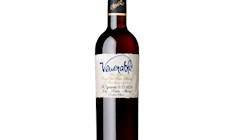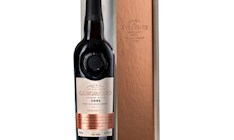TABLE OF CONTENTS
Best Province of Cádiz Wine Appellation Types
Pedro Ximénez is a type of Spanish sherry, as well as the name of the grape that is used to produce it. The grapes are picked when ripe and are then traditionally laid out in the sun—which increases their sugar content. After the grapes are pressed, the grape juice is fermented and fortified before it is left to age using the traditional solera system.
Pedro Ximénez sherry is typically intense and sweet with a thick, velvety texture and aromas that are reminiscent of dried fruit, primarily raisins, dates, and figs, as well as the complementary notes of honey, jam, vanilla, chocolate, and coffee.
THE BEST Pedro Ximénez Fortified Wines

Sherry is a fortified white wine from Andalusia. It comes in a variety of styles, from light dry wines to complex and aromatic sweet varieties. They are mostly produced from Palomino grape, though sweet sherry wines also employ Pedro Ximénez and Moscatel grapes.
After the base wine is fortified with grape spirit, it is aged in a unique solera system. The maturation can be biological under a layer of flor—a film of yeast on the surface—or with oxidation. Depending on the amount of alcohol and the type of aging, dry sherry wines, or vinos generosos, are classified into five basic styles: Fino, Manzanilla, Amontillado, Oloroso, and Palo Cortado.
VARIATIONS OF Sherry
THE BEST Sherry Fortified Wines
Amontillado is a rich and complex dry sherry variety. It is made from Palomino grapes, but unlike Fino and Manzanilla, this fortified wine is first aged biologically—under a layer of flor—and when the flor disappears, the wine is exposed to oxidation.
Depending on the level of maturation, Amontillado can have a slightly different character, but it is typically topaz or amber in color, while its aromatic profile usually includes complex nutty and herbal notes, with hints of oak. The wine should be served slightly chilled, and though it can be slowly sipped on its own, it also pairs well with hard cheeses, jamón Iberico, and vegetables such as mushrooms, artichokes, and asparagus.
Oloroso is a variety of fortified sherry wines that is made from Palomino grapes. Unlike other dry sherry styles, oloroso is exposed to oxidation throughout the maturation in barrels and does not include the element of biological aging under the layer of yeast (flor).
This results in a dark-colored wine that may range from amber to almost dark brown, depending on the age. As its name suggests, oloroso translates as scented, this sherry variety is incredibly fragrant, typically displaying complex aromas of nuts that are complemented by balsamic, leather, and truffle nuances.
THE BEST Oloroso Fortified Wines

Manzanilla is a dry sherry variety made from Palomino grapes in Sanlúcar de Barrameda. This light and refreshing wine is aged naturally, under a thick layer of yeast (flor). It is straw-colored with aromas of almonds, yeast, and chamomile.
Since Sanlúcar de Barrameda is a coastal town, during aging, Manzanilla also attains a characteristic salty note, unlike its close relative Fino. It should always be served chilled, and it pairs exceptionally well with seafood, salads, and cold soups.
Made from Palomino grapes in Jerez or Puerto de Santa María, Fino is the driest and the most delicate sherry variety. This fortified wine is aged naturally, under a layer of flor—a film of yeast that appears on the surface while the wine is matured in a barrel.
Fino is refreshing and light, with typical notes of almonds and yeast. It is best served chilled, and although it can be enjoyed as an aperitif, Fino also pairs well with tapas such as olives, Ibérico ham, or croquetas, as well as seafood, vegetable dishes, or cold soups.
Palo Cortado is the rarest dry sherry variety. Historically, this fortified wine was produced when a base wine that started as Fino or Manzanilla would unexpectedly lose the layer of flor—a thick layer of yeast—and then it would undergo slow oxidation which would result in a distinct sherry variety which falls between the Amontillado and Oloroso styles.
Nowadays, this process is monitored by experts, and it is rarely left to chance. Palo Cortado is typically light brown with a complex profile that combines refined flavors of Amontillado with more robust expressions found in Oloroso. It should always be served slightly chilled and it is recommended to be appreciated on its own, but it also pairs well with matured cheese, nuts, marinated or smoked fish, as well as foie gras and rustic dishes such as oxtail stew (rabo del toro).
TasteAtlas food rankings are based on the ratings of the TasteAtlas audience, with a series of mechanisms that recognize real users and that ignore bot, nationalist or local patriotic ratings, and give additional value to the ratings of users that the system recognizes as knowledgeable. TasteAtlas Rankings should not be seen as the final global conclusion about food. Their purpose is to promote excellent local foods, instill pride in traditional dishes, and arouse curiosity about dishes you haven’t tried.





